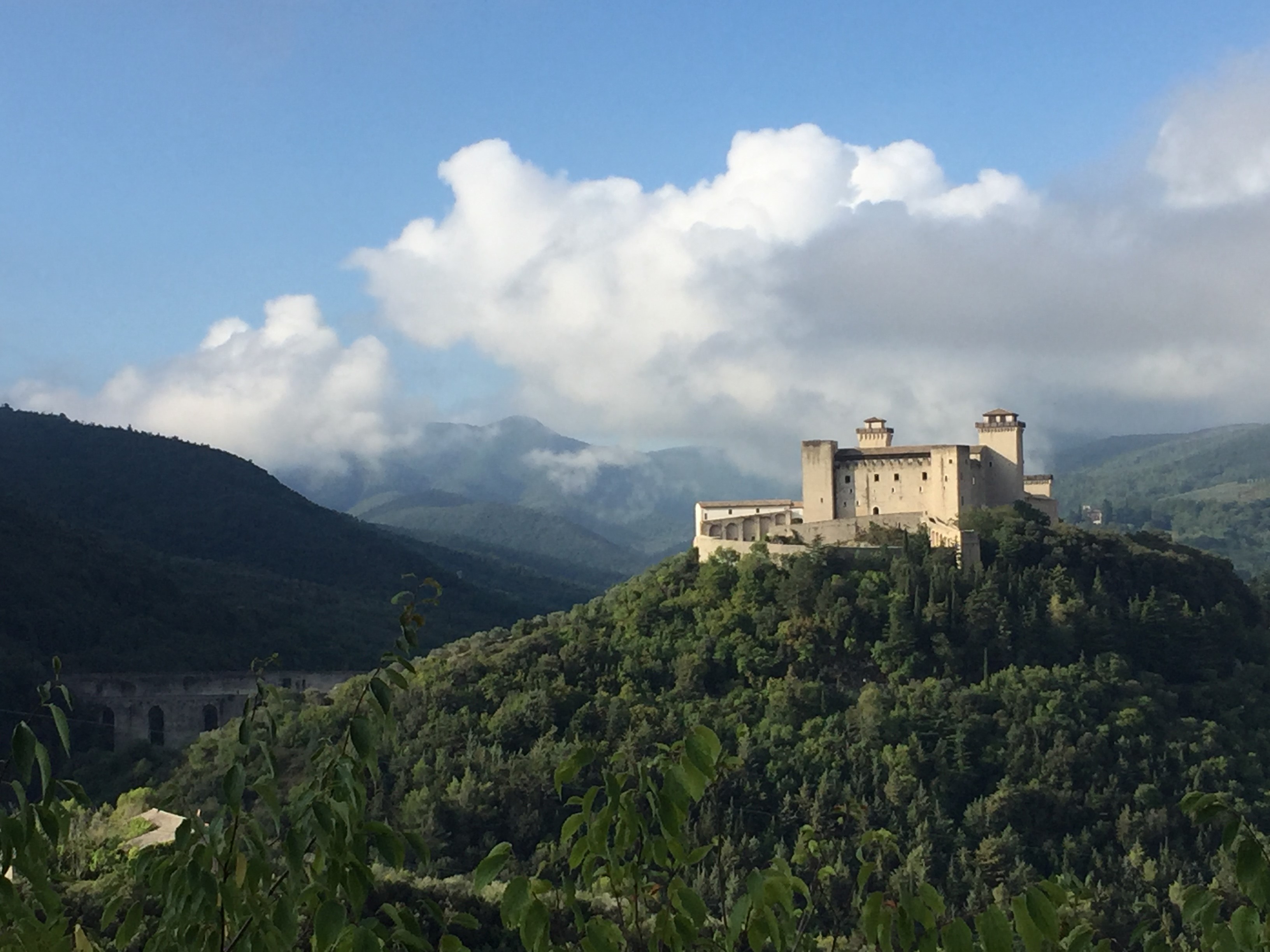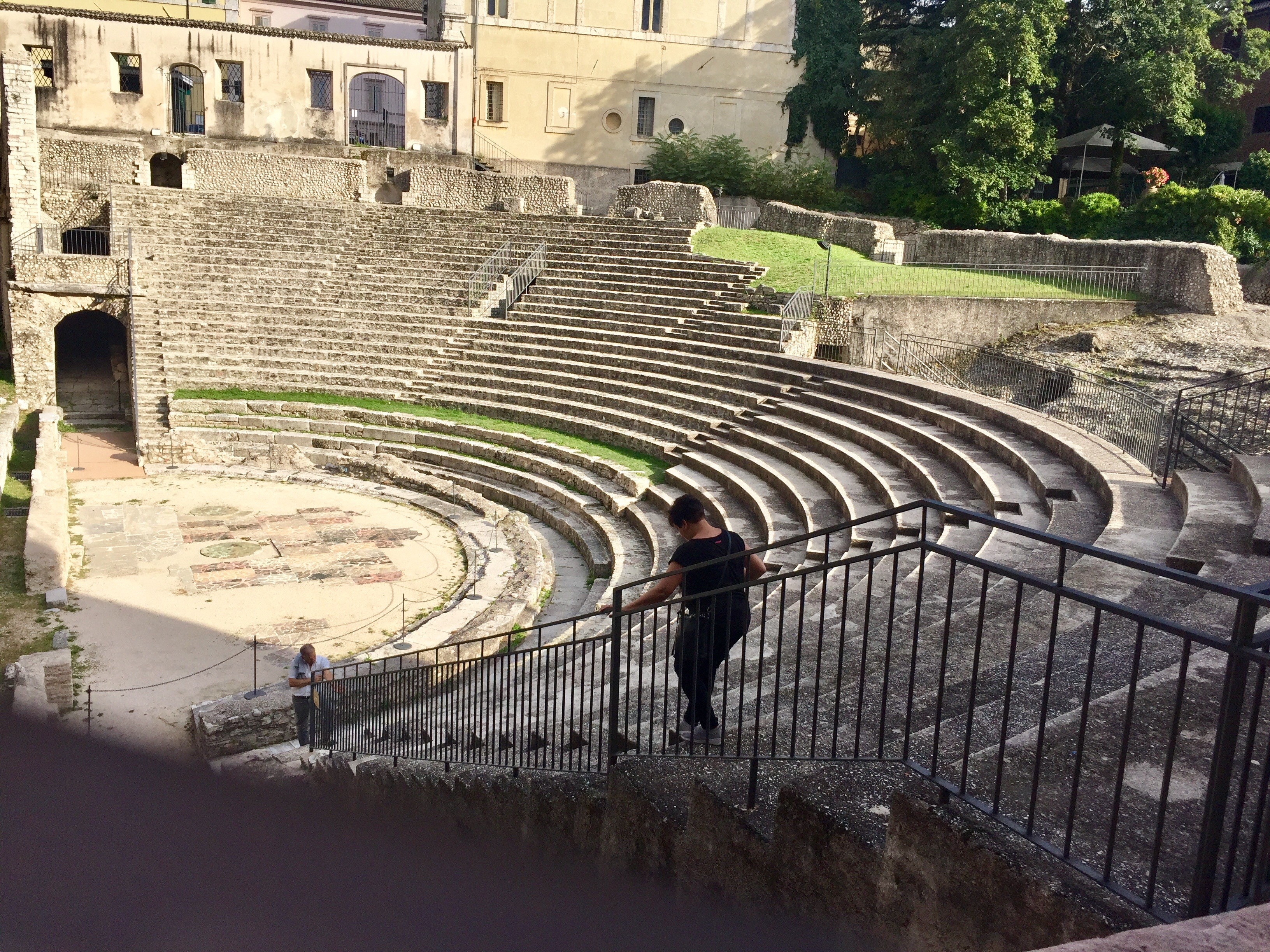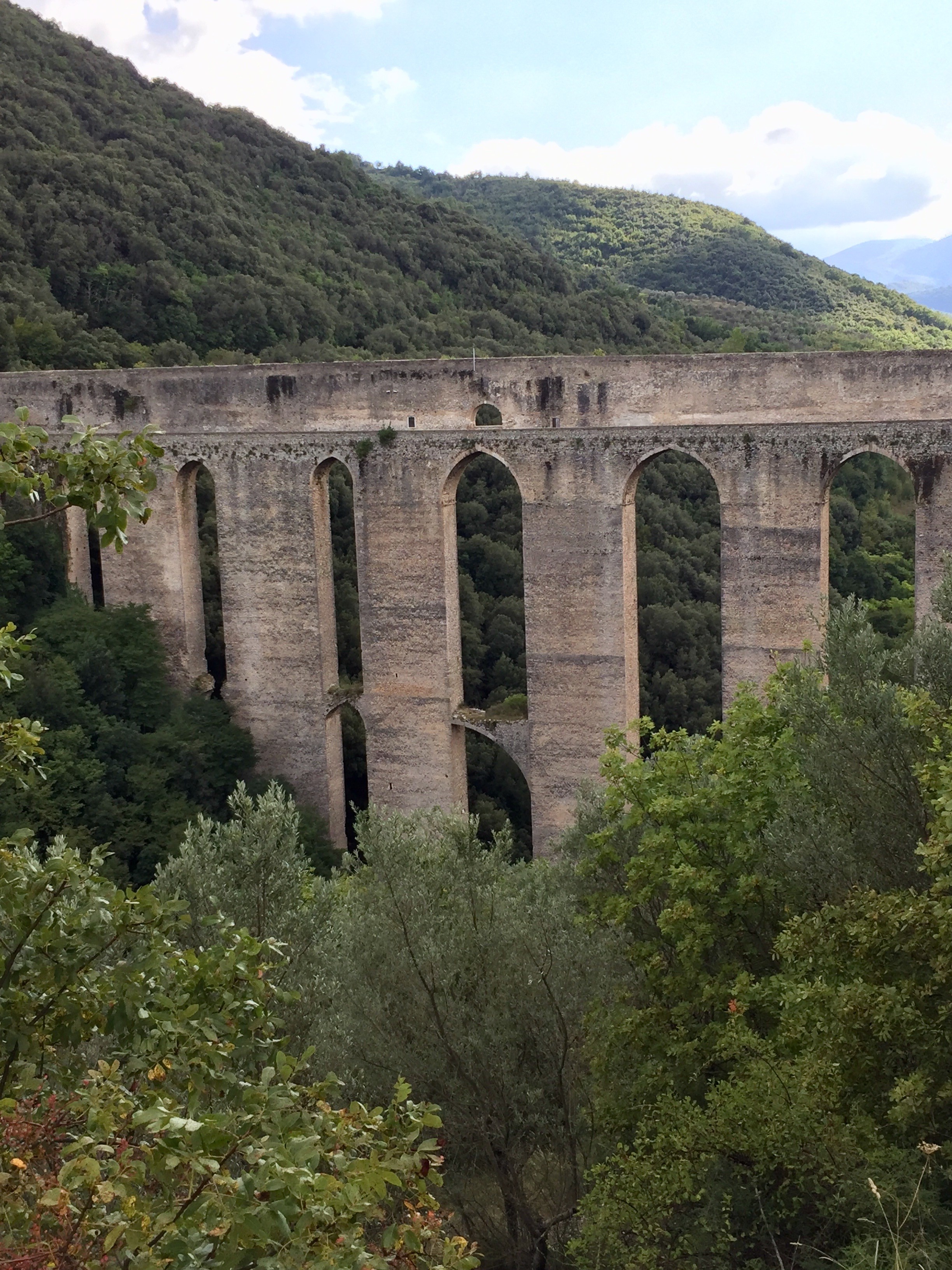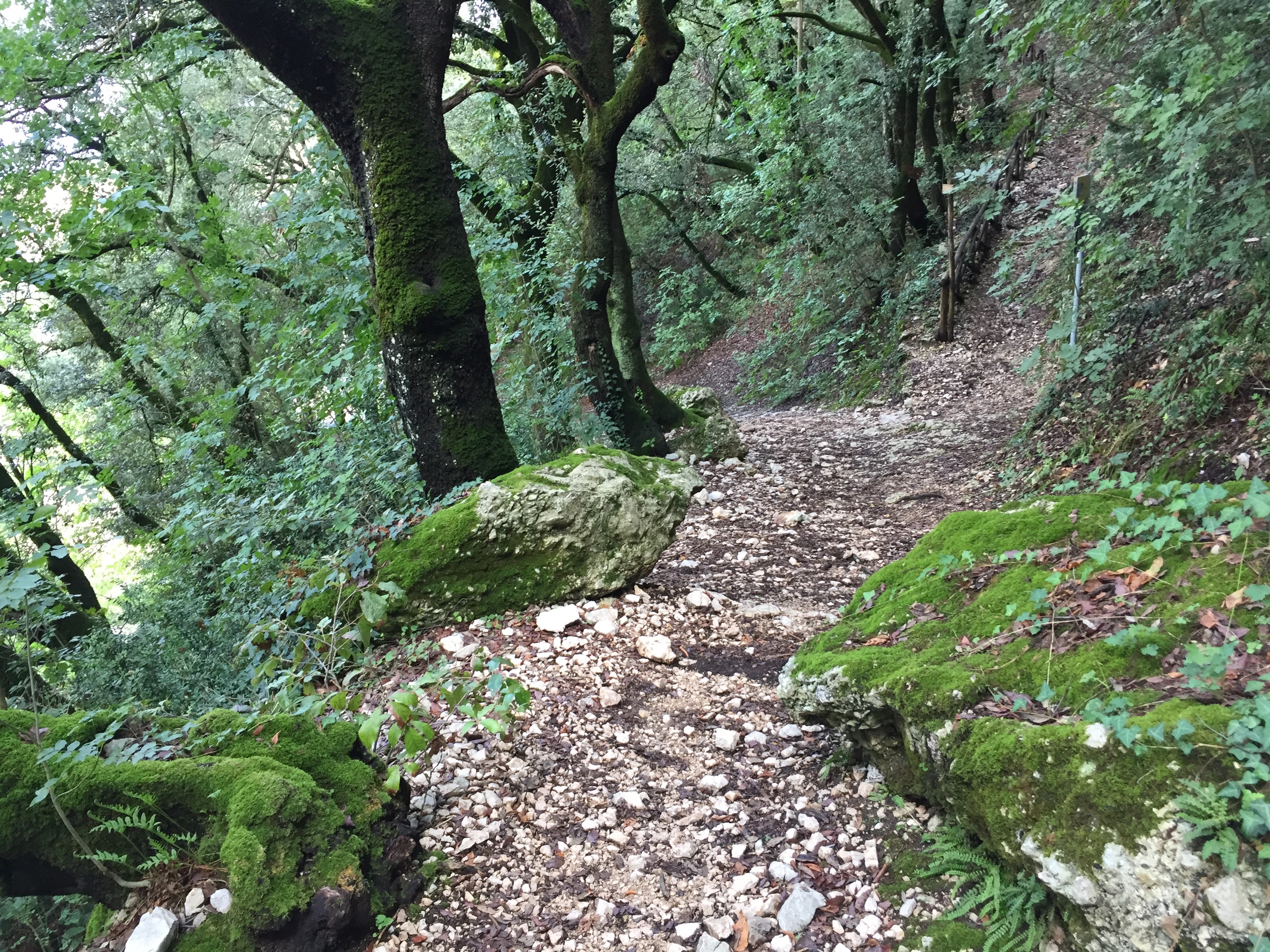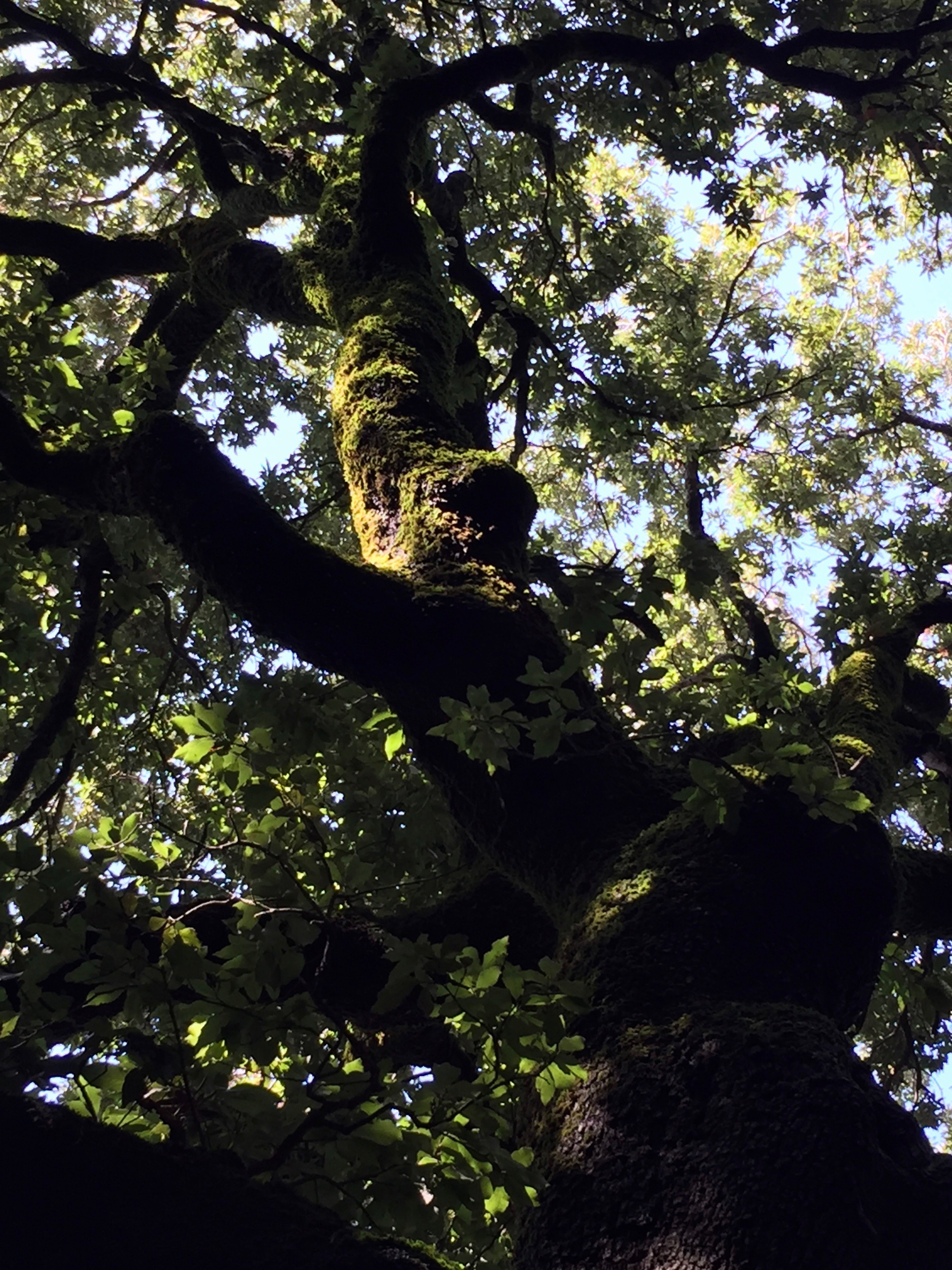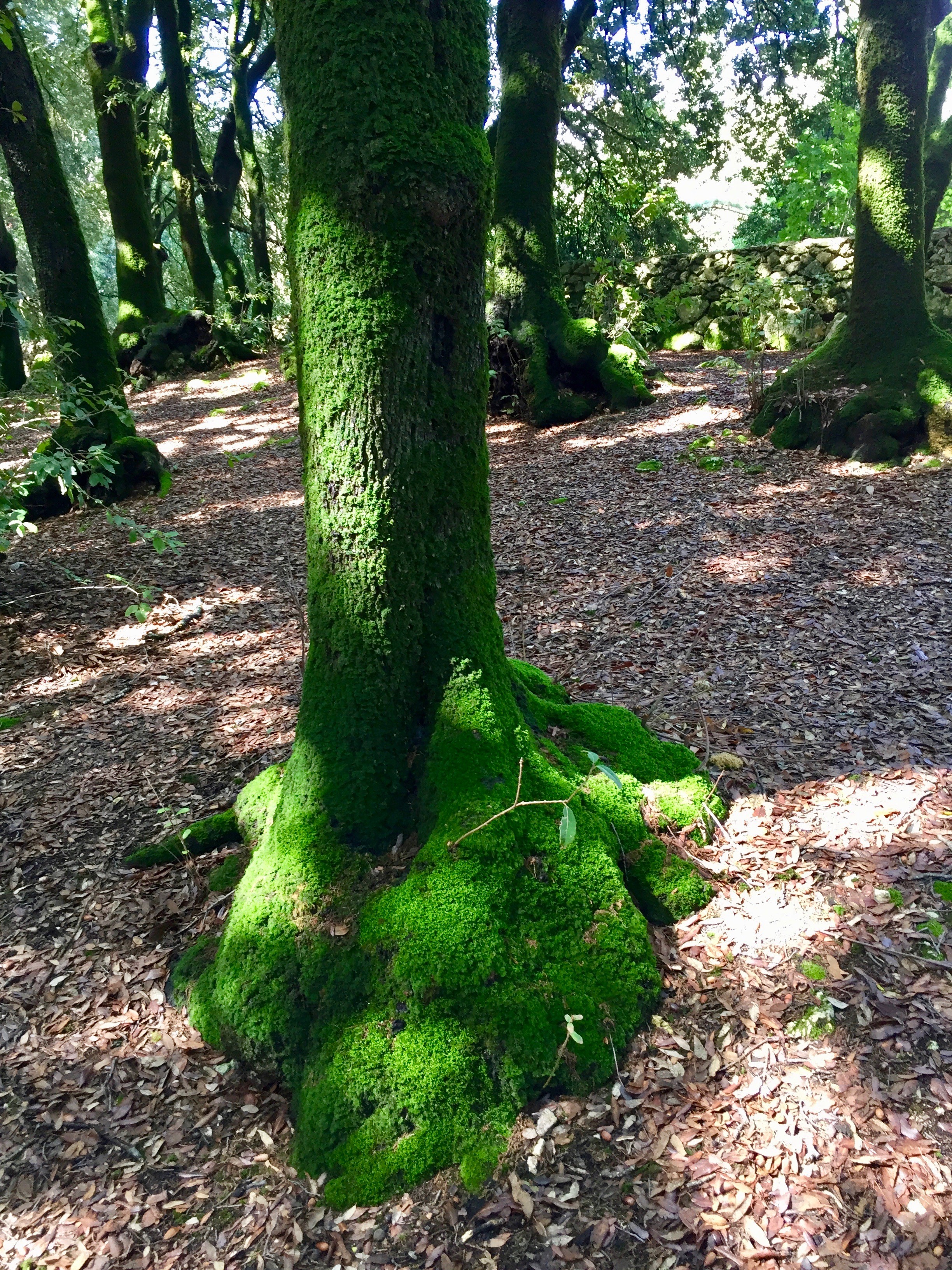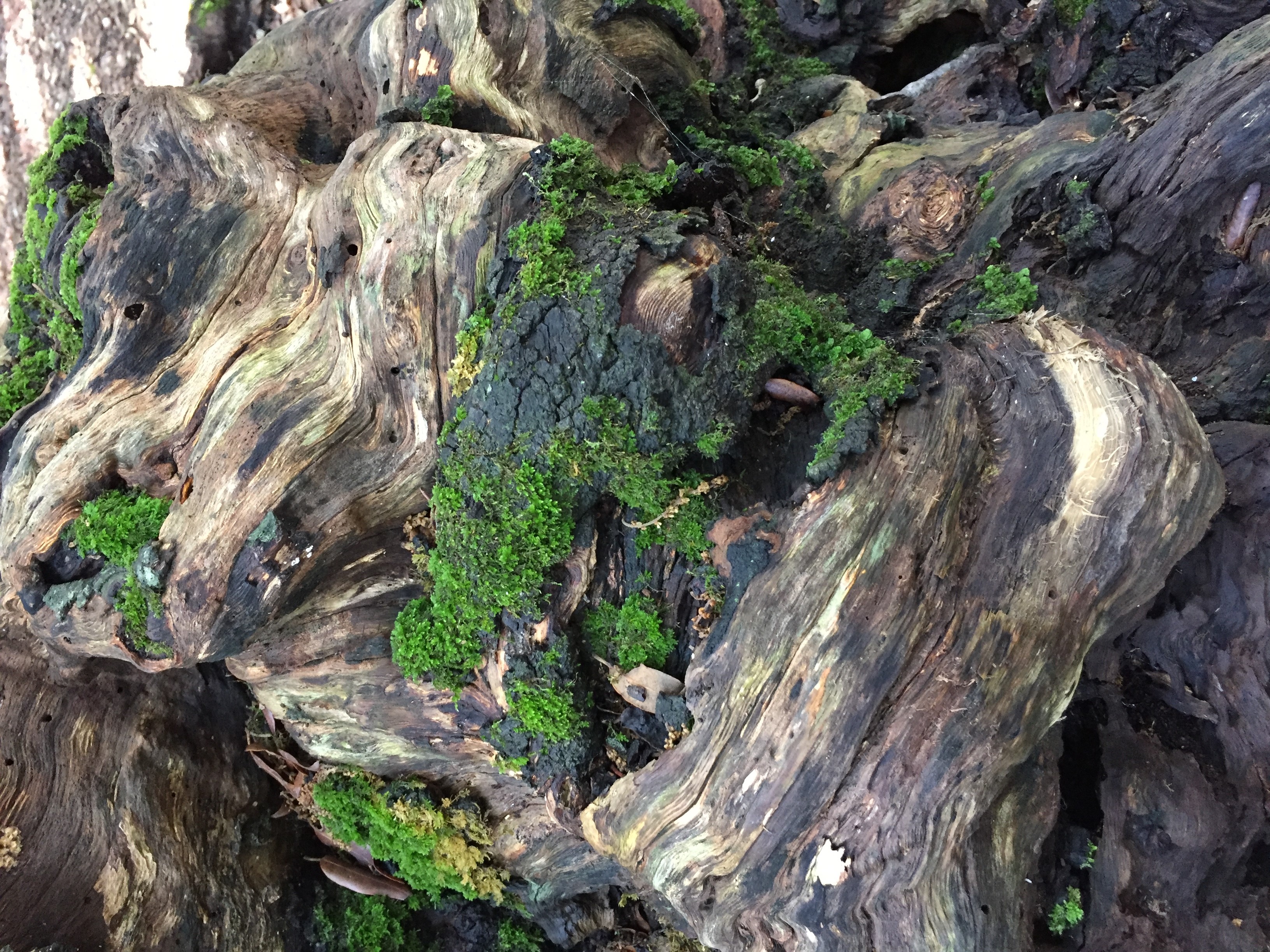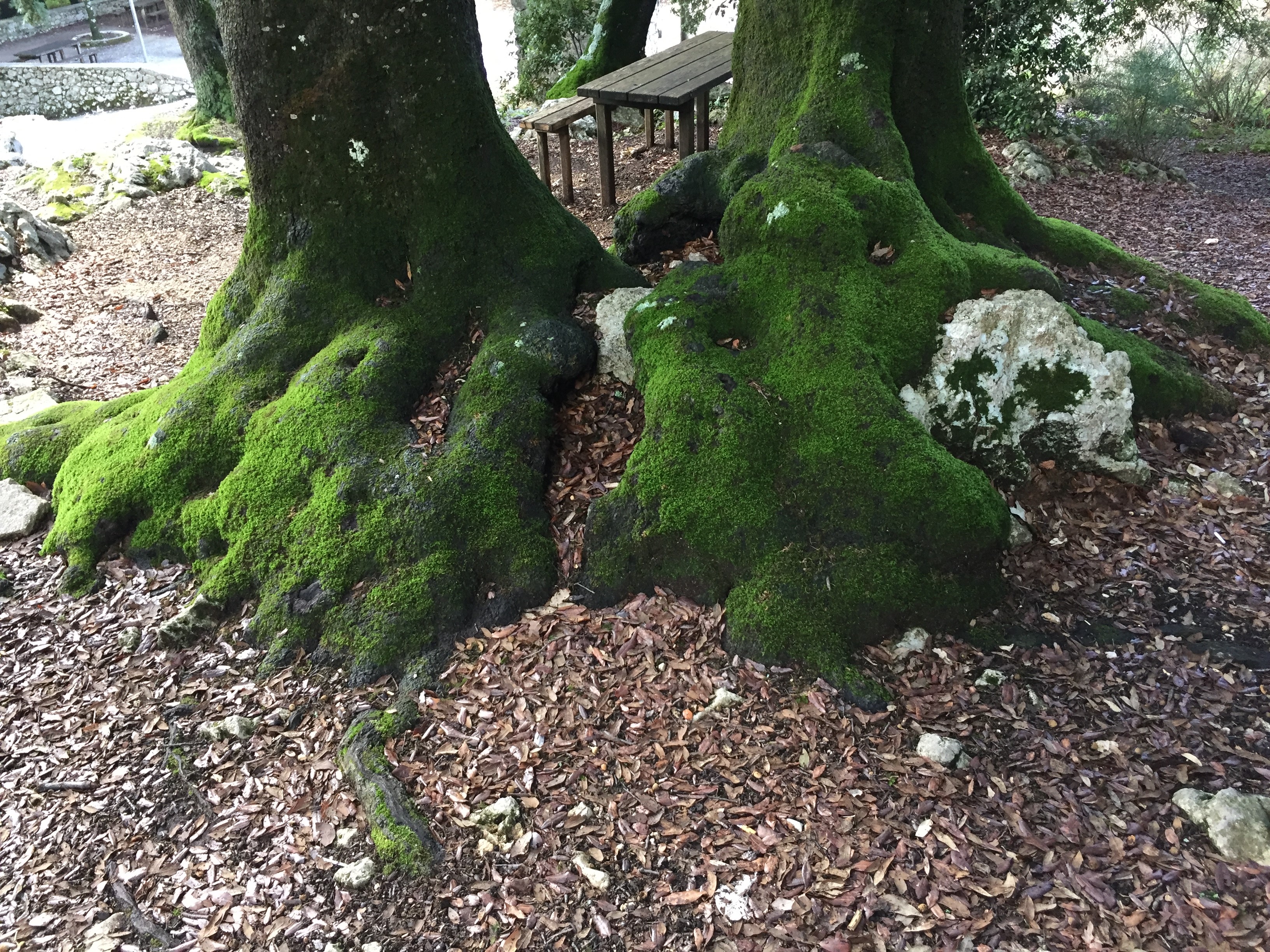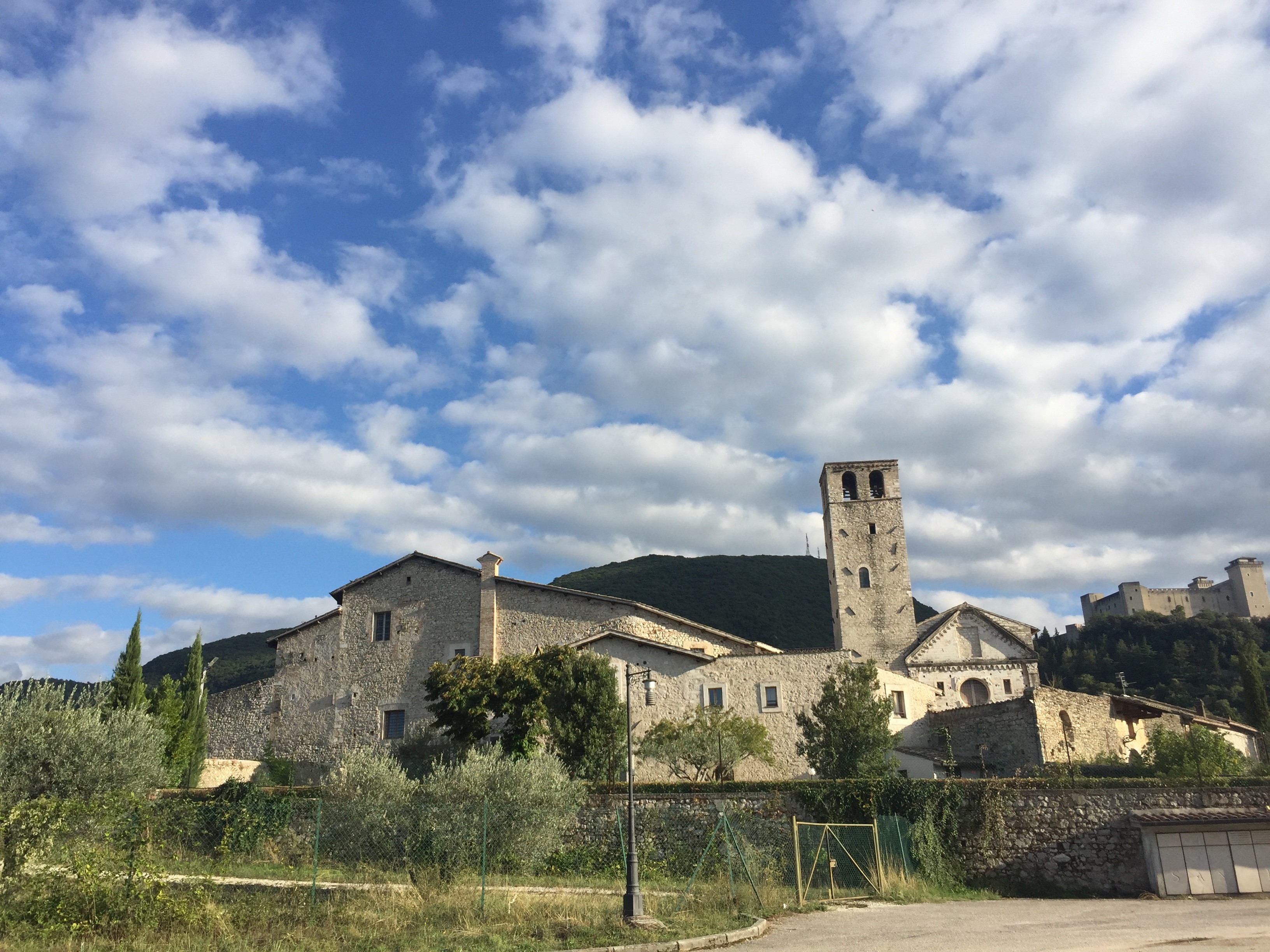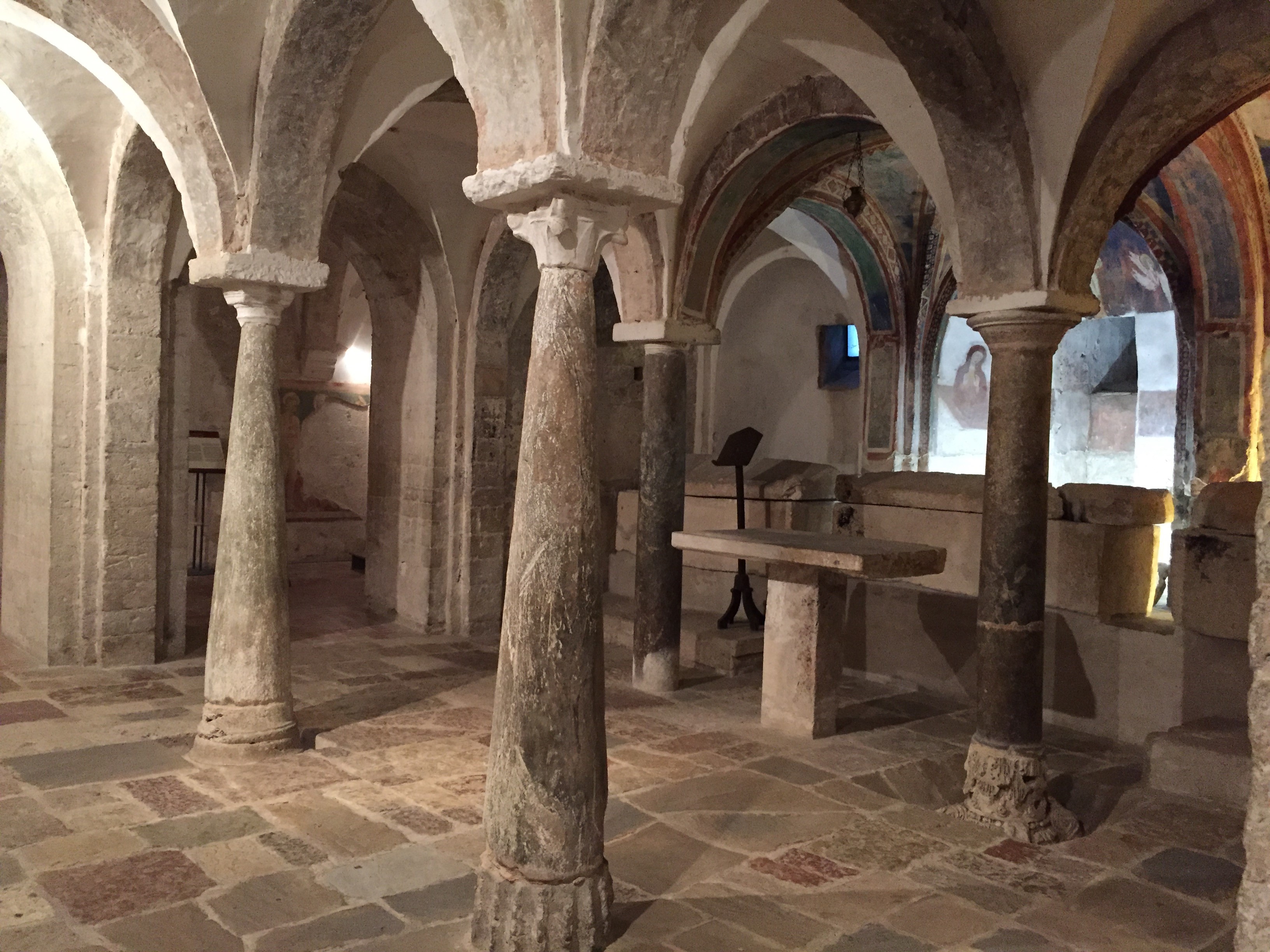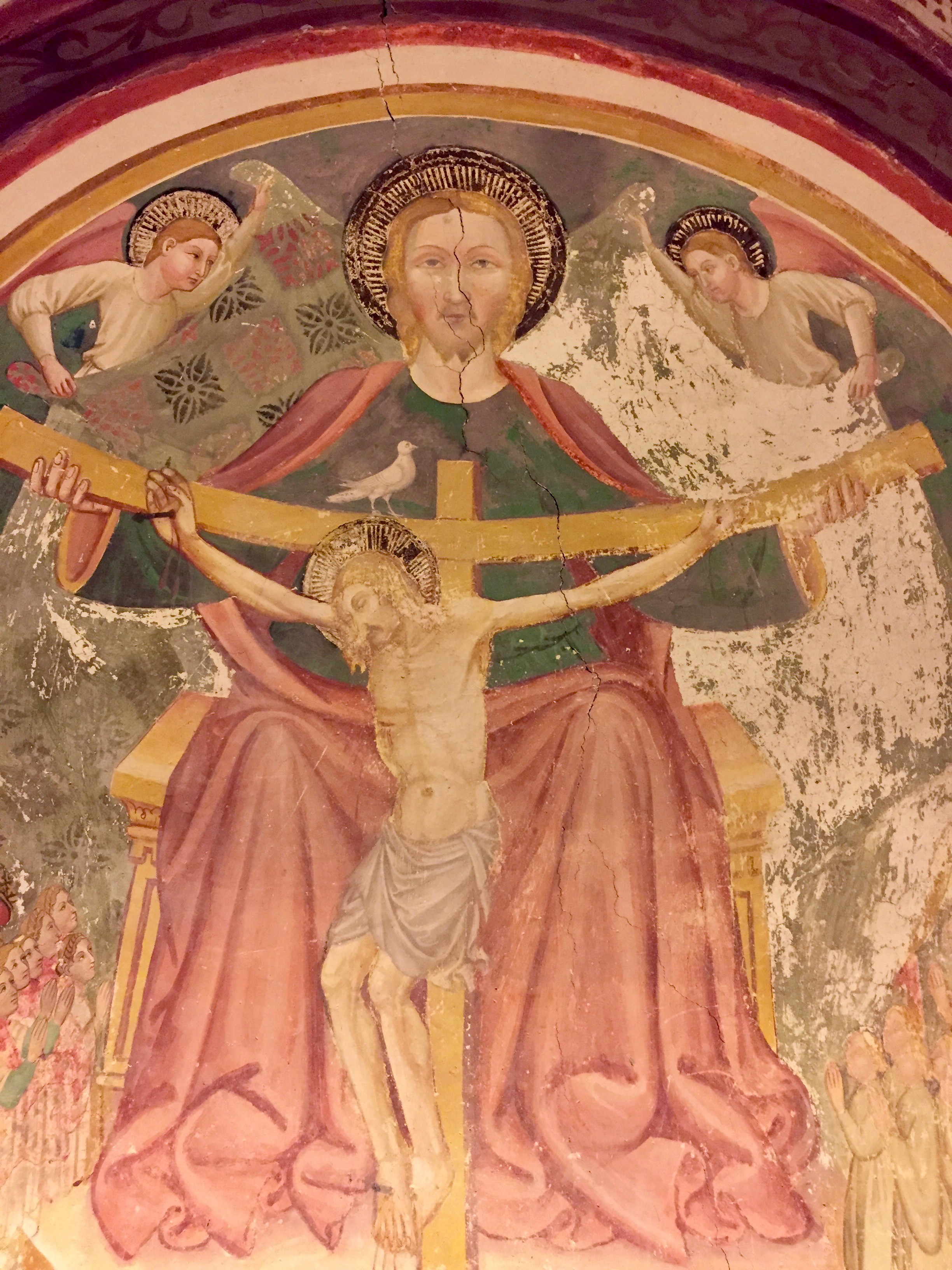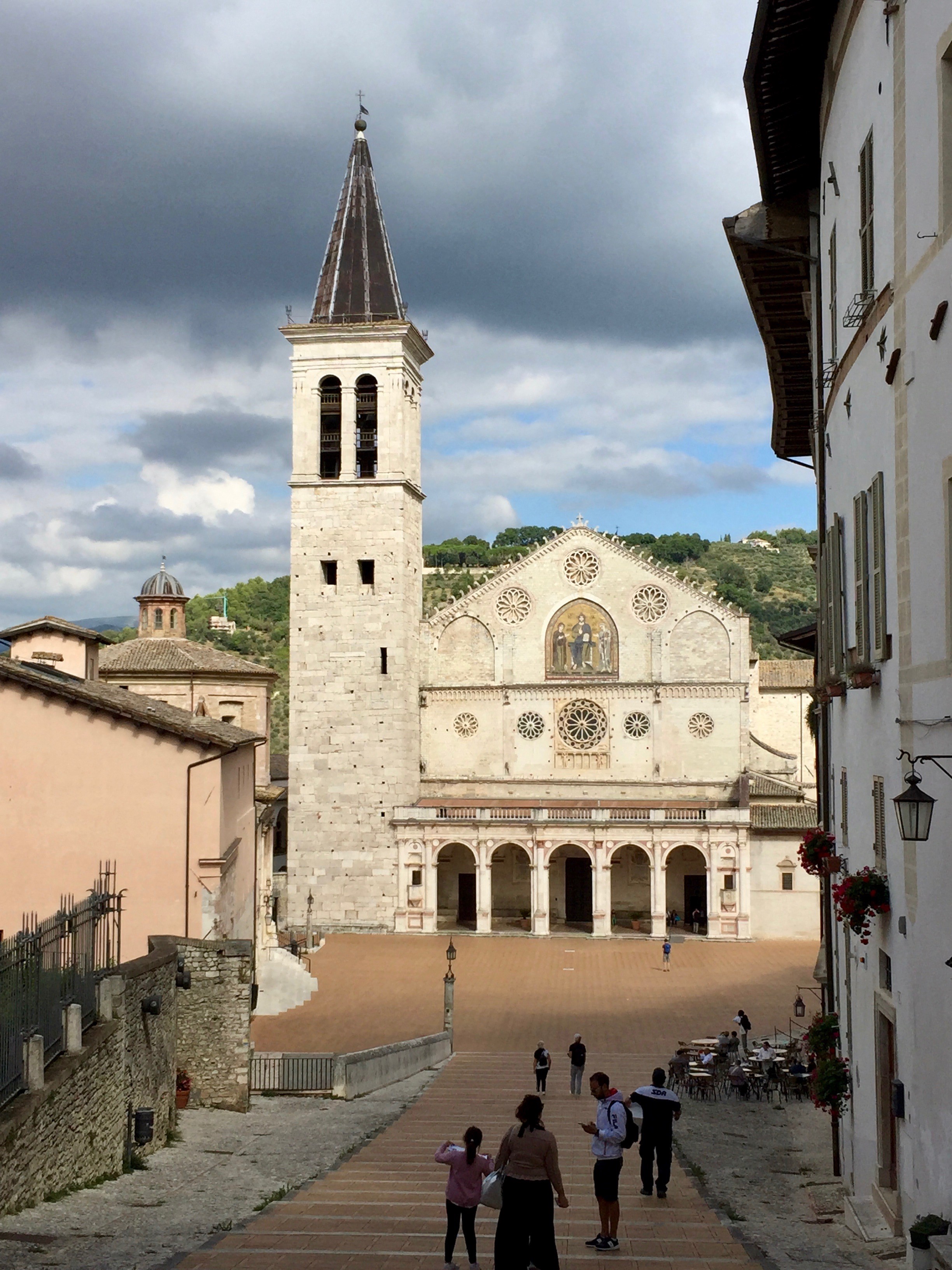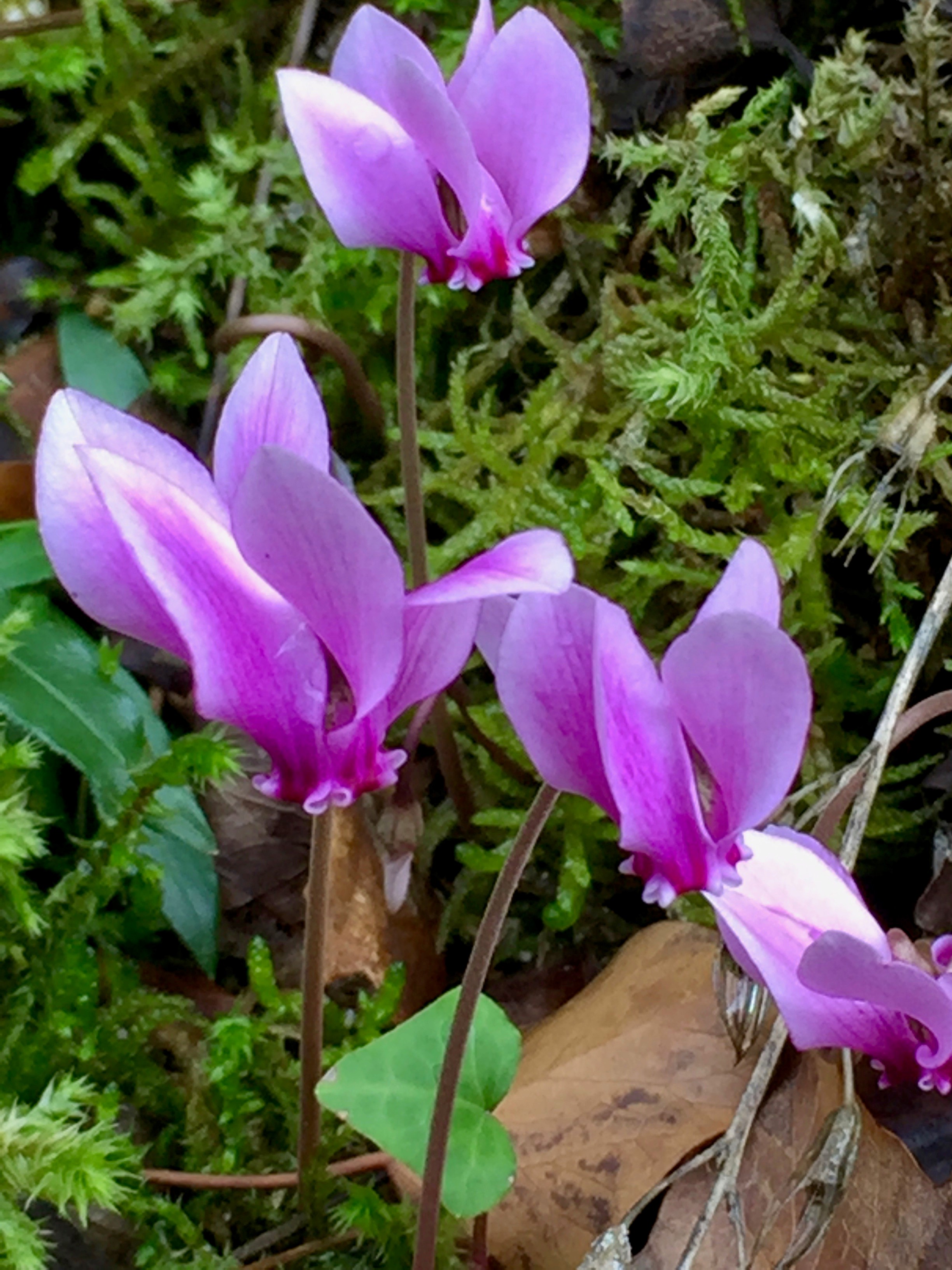(10)
Pilgrimage and Joyfulness
Whenever I walk on a pilgrimage, after several days of hiking in nature, my heart is filled with joy. Pilgrimage and joy belong together for me. This joy is like air stored deep down in the body bubbling up. The main source of this joy might be the wonder I see in the natural world, this world of justness. Out of this wonder comes gratitude for life. This gratitude embraces every experience.
Rocca (castle) of Spoleto
The town Spoleto is built on a hill. Narrow streets and stairs lead up to the Rocca, a 14th century castle that sits on the top like a hen on her chick. A certain melancholy hoovers over this town. Palazzos with crumbling, dark facades speak of past times. Many of the palazzos are empty.
One of the many streets of Spoleto
The Roman past is still visible in the amphitheater and other leftovers from Roman times.
Roman amphitheater
What I loved most in Spoleto was the 13th century aqueduct Ponte delle Torre, which connects the 800-meter high mountain Monteluco with Spoleto.
For centuries, the Ponte delle Torre was used as a walkway between Monteluco and Spoleto. It has been closed since the last earthquake.
I stayed for 2 nights in order to take a side trip up Monteluco, a mountain already considered sacred by the Romans. In the Lex Spoletina (214 BCE), they stated punishments for disturbing the forest.
The walk up to the top of the mountain was magical. Oak trees covered up to their crowns by moss stood between moss-patched rocks, which gave the whole mountain a timeless appearance.
Walk up to Monteluco
Powerful oak tree covered by moss
I stayed overnight in the guesthouse San Ponziano, a former Benedictine monastery. It is a huge complex outside of Spoleto with a Romanesque church. Unfortunately, the inside was modernized in the 17th century. However, the crypt is a pure treasure.
Monastery San Ponziano
Romanesque lion in front of San Ponziano
Crypt
The crypt is decorated with magnificent frescos. One of the frescos looked like a huge eye and reminded me of Buddha’s wisdom eye on the stupas in Nepal.
Trinity painted by Maestro della Dormitio di Terni around 1400 CE
So far, I did not have any physical problems. This changed dramatically in Spoleto. Both legs cramped up and it felt as if different forces pulled my muscles and nerves in all directions. I was concerned – had I developed vein inflammation? I called my daughter, Susanne, in Phoenix, who is a medical doctor. Just rest your legs upwards, she said. If it does not change, call me again. The next day it was gone.
Duomo
In the Duomo Santa Maria Assunta, an original text written by St. Francis for his favorite disciple and constant companion, Leo, is displayed. It is one of only two original writings by St. Francis. Brother Leo was also his secretary.
One time, St. Francis asked Brother Leo to write down his thoughts about pure joy. At about this time, St. Francis had been pushed aside from his own order, that he himself had founded – his strict rules of poverty were rejected. In his dictation, St. Francis mentioned scenarios that were impossible to reach – like converting every Muslim to Christianity. Even that, he said, would not be pure joy. Pure joy does not vanish when one faces the most severe situations – like being chased away in the middle of the night in winter – hungry, freezing, sick, called unworthy, dirty, and stupid – by one’s own brothers when asking for shelter. Being chased away and still keeping a mind of equanimity and patience, not being reactive – this is pure joy!
During my pilgrimages, the joy I felt was the joy of being alive. It was a bodily feeling caused by the state of mind I was in. Gratefulness for life, equanimity, and living in the present moment were probably the most important factors. The joy came naturally and organically just by walking in nature.
Life is very different during quarantine. I train my mind to consciously cultivate gratitude, to practice non-reactivity and kindness, and to be careful not to fall into a routine, where the freshness of the moment is swallowed up by habitual ways of doing things. I consider this time a perfect practice ground, in order to live a joyful life every moment of my life.

